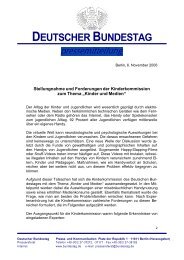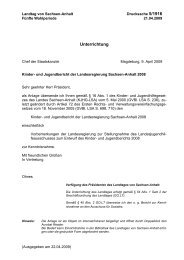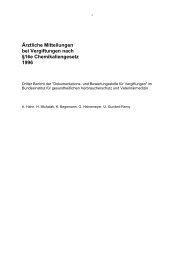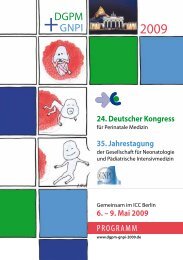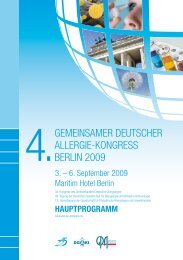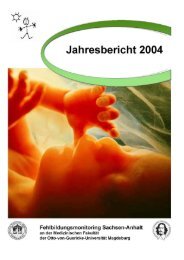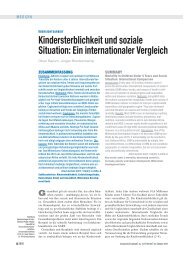Wiener Gesundheits- und Sozialsurvey Vienna Health and Social ...
Wiener Gesundheits- und Sozialsurvey Vienna Health and Social ...
Wiener Gesundheits- und Sozialsurvey Vienna Health and Social ...
Sie wollen auch ein ePaper? Erhöhen Sie die Reichweite Ihrer Titel.
YUMPU macht aus Druck-PDFs automatisch weboptimierte ePaper, die Google liebt.
SUMMARY AND CONCLUSIONS<br />
percent) among the people who have not visited a dentist<br />
at all during the past five years. The number of people<br />
who go for check-ups increases with the level of education,<br />
as well as with a person’s professional status. Those<br />
in higher positions reported to have visited a dentist five<br />
times or more, while unqualified men <strong>and</strong> women did so<br />
conspicuously less frequently.<br />
38<br />
Priority Measures<br />
General <strong>Health</strong> Situation<br />
To describe the general health situation of people in <strong>Vienna</strong>,<br />
we distinguished between subjective health, including<br />
amongst others a person’s mental condition <strong>and</strong><br />
quality of life, <strong>and</strong> objective health as the sum total of a<br />
person’s ailments <strong>and</strong> diseases. By ”objective health” we<br />
mean self-objectified accounts of ailments <strong>and</strong> diseases.<br />
”Subjective health” includes the following variables: satisfaction<br />
with state of health, subjective assessment of<br />
state of health on a scale of 1 to 100, subjective physical<br />
condition, ”feeling fit”, daytime stress, well-being in the<br />
evening.<br />
More than 80 percent of people are very or fairly content<br />
with their own state of health right into old age.<br />
People aged 74 <strong>and</strong> above are noticeably less so, only 75<br />
percent of men <strong>and</strong> 66 percent of women in that age<br />
group claim to be satisfied with their state of health.<br />
While satisfaction rates are generally high, contentedness<br />
still rises considerably with the level of income.<br />
Subjective health is rated highest among young people<br />
<strong>and</strong> continuously drops with increasing age. Well-being<br />
in the evenings, on the other h<strong>and</strong>, increases with age.<br />
People with the lowest income <strong>and</strong> educational level as<br />
well as people engaged in unskilled activities are least<br />
satisfied with their health <strong>and</strong> well-being in the evenings.<br />
On the whole, health relevant behaviour, too, is largely<br />
dependent on the social gradient. <strong>Health</strong> relevant behaviour<br />
did not appear well-structured <strong>and</strong> was thus quite<br />
difficult to predict. Variances in physical activity were<br />
best explained with the help of social <strong>and</strong> individual resources.<br />
Education seems to be a vital prerequisite for<br />
positive health behaviour.<br />
● Resort to socio-cultural resources to promote an active life-style <strong>and</strong> to encourage purposeful activities<br />
● Increase social competencies as well as capacity to act<br />
● Promote enjoyment <strong>and</strong> moderation with food, alcohol <strong>and</strong> nicotine consumption<br />
● Promote sensible use of medication<br />
● Offer gender-oriented health promotion services<br />
● Offer health services tailored to the needs of different social groups<br />
● Facilitate access to education <strong>and</strong> counselling<br />
As for the other subjective health indicators, i.e. subjective<br />
physical condition, ”feeling fit”, <strong>and</strong> well-being in<br />
the evenings, they also depend on social resources, such<br />
as income, education <strong>and</strong> professional situation, as do<br />
”subjective health assessment” <strong>and</strong> satisfaction with<br />
state of health. ”Daytime stress” alone seems to deviate<br />
from this pattern. This is easily explained by the fact that<br />
subjectively felt stress not only depends on a person’s capacity<br />
to deal with stress but also to a large extent on<br />
that person’s circumstances of life. Stress frequency<br />
drops significantly with retirement, it is more strongly<br />
felt by people of the highest income, education or career<br />
level <strong>and</strong> less so by people in lower positions.<br />
Of all resources examined, income has the greatest influence<br />
on subjective health. Threshold value behaviour,<br />
i.e. a ”saturation effect”, is displayed by all of them,<br />
which means that health noticeably improves up until<br />
the second to last category <strong>and</strong> only slightly so from<br />
there on. A further increase in income or education thus<br />
has very little effect on a person’s health. Consequently,<br />
an adequate supply of external resources at the threshold<br />
level would suffice to ensure adequate health for everyone.<br />
Threshold value relations are quite common in<br />
socio-epidemiological calculations of life expectancy. In<br />
countries which have already reached a certain GNP<br />
(gross national product) level, an increase in life expectancy<br />
is rarely due to an increase in GNP . Below that<br />
WIENER GESUNDHEITS- UND SOZIALSURVEY



